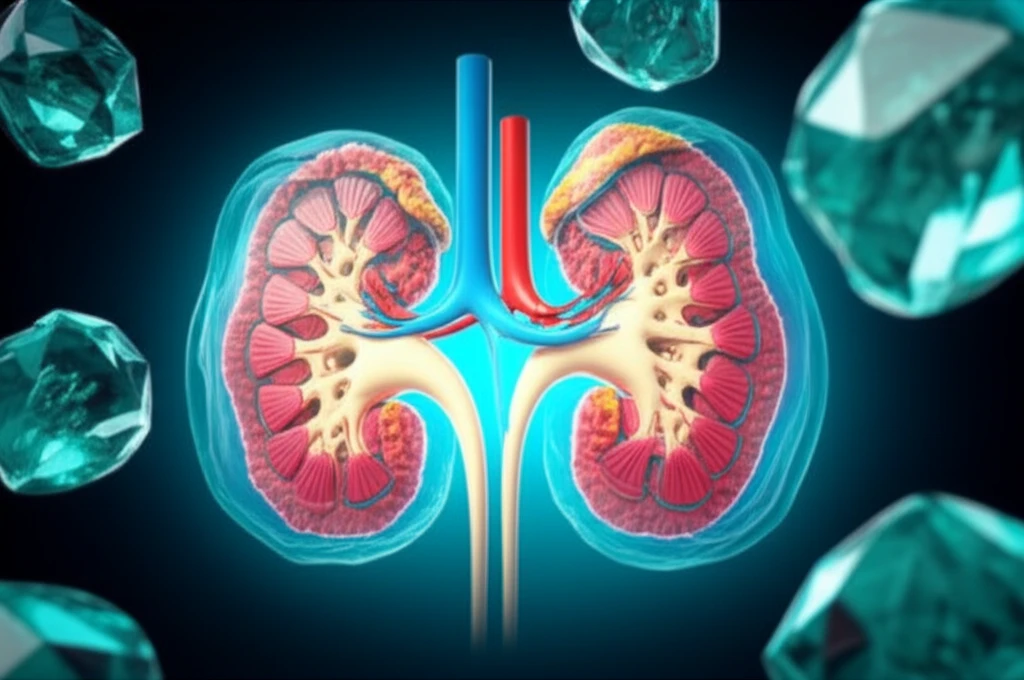
Kidney Stone Breakthrough: Could PTX3 Be the Key to Prevention?
"New research suggests a surprising role for a long-ignored protein in preventing kidney stone formation and chronic kidney disease. Is this the future of kidney health?"
Kidney stones. Just the words themselves can send shivers down the spines of those who've experienced their excruciating pain. But beyond the immediate agony, kidney stones can also lead to more serious, long-term health problems like chronic kidney disease (CKD). Millions suffer, searching for effective ways to prevent these crystalline invaders from forming in the first place.
Now, imagine if your body had its own built-in defense system against kidney stones – a natural inhibitor that kept these mineral formations at bay. That's precisely what a team of researchers has uncovered: a protein called PTX3, or long pentraxin 3, that appears to play a critical role in preventing the development of kidney stones and related kidney damage.
This groundbreaking discovery, published in Frontiers in Immunology, could revolutionize how we approach kidney stone prevention and treatment. But what exactly is PTX3, and how does it work its magic in our kidneys? Let's dive into the science behind this exciting breakthrough and explore its potential implications for your future kidney health.
PTX3: The Body's Natural Stone Crusher?

The research, led by Julian A. Marschner and Hans-Joachim Anders, highlights PTX3's unique ability to act as an "opsonin." Think of opsonins as the clean-up crew of your body. They bind to foreign invaders or unwanted particles, marking them for destruction by the immune system. The researchers hypothesized that PTX3 might perform a similar function with calcium oxalate crystals, the primary component of most kidney stones.
- PTX3 Inhibits Crystal Growth: In test tubes, adding PTX3 to solutions containing calcium and oxalate significantly reduced the size of the crystals that formed. Bovine serum albumin did not have same effect.
- PTX3 Levels Increase During Hyperoxaluria: In healthy mice, PTX3 was barely detectable in the kidneys or urine. However, when mice were fed a diet high in oxalate (a key ingredient in kidney stone formation), PTX3 levels surged in their kidneys and urine.
- PTX3 Deficiency Leads to Kidney Problems: Mice genetically engineered to lack PTX3 were far more susceptible to developing nephrocalcinosis (calcium deposits in the kidneys) and CKD when fed an oxalate-rich diet.
- PTX3 Blocks Crystal Adhesion: PTX3 appears to prevent calcium oxalate crystals from sticking to the cells lining the kidney tubules. By blocking this adhesion, PTX3 helps prevent the crystals from clumping together and forming larger stones.
The Future of Kidney Stone Treatment?
While this research is still in its early stages, the discovery of PTX3 opens up exciting new avenues for preventing and treating kidney stones. Imagine a future where people at high risk of kidney stones could take a supplement or medication to boost their PTX3 levels, strengthening their natural defenses against crystal formation. Further research is needed to fully understand how PTX3 works and how we can harness its power to improve kidney health. But for those who suffer from the pain and complications of kidney stones, this breakthrough offers a beacon of hope for a future free from these crystalline tormentors.
